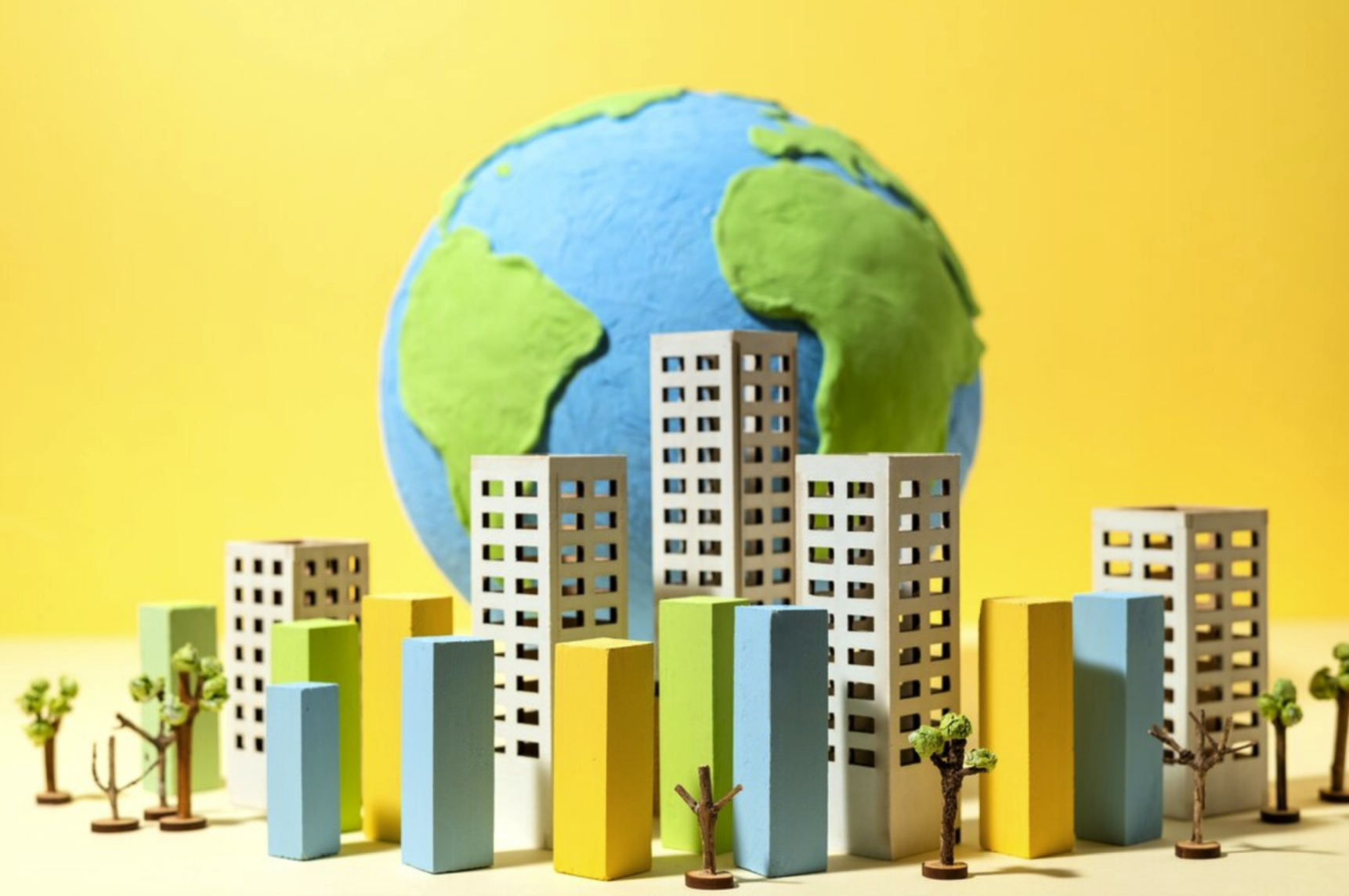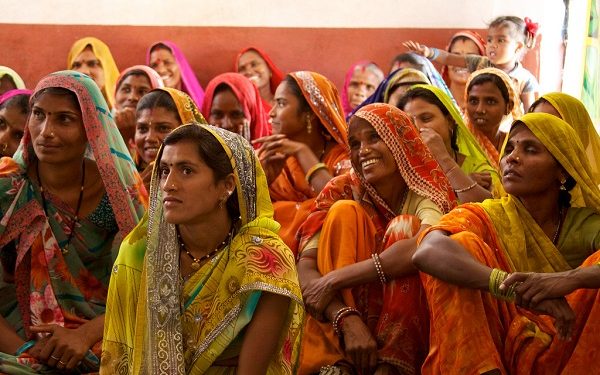As the global population continues to grow, cities are facing increasing pressure to accommodate the influx of people. Urbanization is one of the defining trends of the 21st century, with over half of the world’s population now living in urban areas. This figure is projected to rise to approximately 70% by 2050, particularly in developing regions like Asia and Africa, where urban growth is most pronounced. However, this rapid urbanization raises critical questions about sustainability, resource management, and the quality of life in cities. Cities, especially those experiencing rapid growth, grapple with overpopulation, which strains resources, infrastructure, and ecosystems. The key question is: can urbanization, overpopulation, and sustainability coexist?
Urbanization presents both opportunities and challenges. On one hand, cities are engines of economic growth, generating around 80% of global GDP while using 75% of global energy and contributing to 70% of carbon emissions. On the other hand, poorly managed urban expansion can lead to severe consequences such as increased greenhouse gas emissions, urban sprawl, and the proliferation of slums. Currently, approximately 1.1 billion people live in slum-like conditions, a number expected to double in the next three decades if current trends continue.
Challenges of Overpopulation in Urban Areas
Cities account for approximately 70% of global carbon emissions despite occupying only about 1% of the Earth’s land area. The concentration of people and industries in urban areas leads to higher energy consumption and waste production.
Moreover, poorly planned urban expansion often results in habitat destruction and increased vulnerability to climate change. For example, urban areas are more susceptible to flooding due to impervious surfaces that prevent water absorption. The IPCC highlights that many developing cities are particularly vulnerable to climate impacts while simultaneously being responsible for a significant portion of greenhouse gas emissions.
Urbanization can exacerbate social inequalities, leading to the proliferation of informal settlements or slums. As cities grow rapidly, many new residents cannot afford formal housing and instead settle in makeshift accommodations lacking basic services. The UN estimates that about 1.1 billion people live in slum-like conditions, a number expected to increase significantly if current trends continue.
These informal settlements often lack access to clean water, sanitation, healthcare, and education, perpetuating cycles of poverty and marginalization. For instance, in India, where urbanization has increased by over 4% in the last decade, many migrants from rural areas find themselves living in overcrowded conditions with limited access to resources. The lack of adequate housing not only affects individual well-being but also poses broader challenges to urban governance and social stability.
Urban overpopulation creates several complex challenges, which if not managed, can hinder the progress toward sustainable cities. The primary issues include:
- Waste Management: Cities with dense populations generate significant amounts of waste, including solid waste, wastewater, and industrial effluents. Managing this waste is a substantial challenge. Inadequate waste management systems often lead to pollution, affecting air and water quality, and contributing to greenhouse gas emissions. For example, in cities like Mumbai, India, landfills are stretched beyond capacity, leading to toxic leachate and methane emissions that compromise the environment and public health.
- Housing and Urban Sprawl: The demand for housing in densely populated urban centers often leads to the rapid development of informal settlements and slums. This is particularly visible in cities like Lagos, Nigeria, where nearly 70% of residents live in informal housing. Such unplanned growth often lacks access to basic amenities like clean water, sanitation, and electricity. The spread of informal housing also contributes to urban sprawl, putting pressure on peri-urban areas and leading to the loss of green spaces and agricultural lands.
- Infrastructure Strain: Urban areas with high population densities face challenges in maintaining and expanding infrastructure to meet the needs of their growing populations. Public transportation systems, roads, energy grids, and water supply systems are often overburdened. In Jakarta, Indonesia, for instance, overpopulation has contributed to severe traffic congestion, air pollution, and frequent flooding due to insufficient drainage infrastructure.
- Resource Consumption and Environmental Impact: High population densities increase the demand for resources, including water, energy, and food. This heightened demand can lead to over-extraction of natural resources, exacerbating issues like groundwater depletion and deforestation. Cities like São Paulo, Brazil, have faced severe water shortages during drought periods, highlighting the delicate balance between urban consumption and natural resource availability.
Striving for Sustainability
Several cities around the world are demonstrating that it is possible to balance high population densities with sustainable living:
Tokyo, Japan: Efficient Use of Space – Tokyo, one of the most densely populated cities globally, has developed innovative approaches to manage space and resource constraints. Through vertical housing developments and a focus on compact living, Tokyo has optimized its land use. The city’s efficient public transportation system, including its famous metro network, reduces reliance on cars, leading to lower carbon emissions. Moreover, Tokyo’s waste management system, which emphasizes recycling and waste separation, ensures that a significant portion of waste is either recycled or converted to energy.
Freiburg, Germany: A Model of Eco-Districts – Freiburg, known as Germany’s “Green City,” has embraced sustainable urban planning by creating eco-districts like Vauban. This car-free neighborhood is designed with energy-efficient buildings, solar panels, and community gardens. Residents rely on public transportation, bicycles, and walking paths for mobility. Freiburg’s emphasis on renewable energy, community engagement, and sustainable housing serves as a blueprint for other cities aiming to reduce their ecological footprint while accommodating urban growth.
Kigali, Rwanda: Sustainable Growth in an Emerging City – Kigali has implemented policies to ensure that urbanization does not come at the expense of the environment. The city has focused on building affordable housing and implementing waste management programs to keep the city clean and green. The “Clean Kigali” initiative emphasizes waste sorting, recycling, and community involvement, resulting in a city that is widely regarded as one of the cleanest in Africa. Kigali’s approach highlights the potential for sustainable urban growth even in regions with limited resources.
Copenhagen, Denmark: Carbon Neutral Capital – Copenhagen aims to be the world’s first carbon-neutral capital by 2025. The city has implemented extensive cycling infrastructure, with over 375 km of bike lanes, resulting in bicycles outnumbering cars by more than 5:1. This commitment to cycling is complemented by investments in renewable energy sources and energy-efficient buildings. The city also promotes green spaces, which enhance urban biodiversity and improve residents’ quality of life.
Medellín, Colombia: Metrocable System for social inclusion & innovation – Medellín has transformed its urban landscape through the Metrocable system, which connects underserved neighborhoods to the city center, significantly improving access to jobs and services. This initiative has reduced crime rates and fostered social cohesion. Additionally, the city has invested in public spaces and education, enhancing opportunities for marginalized communities and making Medellín a model of social inclusion and urban innovation.
Singapore: City in a Garden – Singapore is renowned for its “City in a Garden” concept, where nearly 50% of the city is covered in greenery. The government prioritizes sustainable architecture and water management, recycling used water and desalinating seawater to meet freshwater needs. The city’s extensive public transportation network reduces reliance on cars, while parks and nature reserves contribute to biodiversity and help mitigate the urban heat island effect.
Barcelona, Spain: Traffic Decongestion initiative – Barcelona has implemented the Superblocks Project, which aims to reduce traffic congestion by creating pedestrian-friendly zones that limit vehicle access. This initiative not only enhances air quality but also promotes social interaction among residents. The city’s Climate Plan includes various collaborative projects aimed at sustainability, making it a leader in urban ecological initiatives.
Vancouver, Canada: Renewable energy – Vancouver’s Greenest City Action Plan targets zero waste by 2040 and aims for 100% renewable energy by 2050. The city has banned single-use plastics and expanded recycling programs while promoting green building practices that have led to numerous LEED-certified structures. Vancouver’s commitment to sustainability is evident in its integrated approach to urban planning, focusing on climate action and sustainable transportation.
Basel, Switzerland: Adapting to climate change – Basel mandates green roofs on all new buildings, significantly contributing to local biodiversity while helping to regulate temperatures during heat waves. This initiative not only enhances the aesthetic appeal of the city but also improves air quality and reduces flooding risks. By integrating nature into urban planning, Basel demonstrates how cities can adapt to climate change effectively.
These cities exemplify how innovative strategies can address the challenges of overpopulation and urbanization while promoting sustainability and enhancing residents’ quality of life.
Can Urbanization, Overpopulation, and Sustainability Coexist?
The examples above show that while overpopulation and rapid urbanization present significant challenges, they also offer opportunities for innovation and sustainable development. The transition to sustainable urban living requires a combination of policy, technology, and community engagement. Cities need to adopt an integrated approach that considers not just the physical infrastructure but also the social and environmental dimensions of urban life.
While technology, innovative urban planning, and green infrastructure are critical for managing urbanization and overpopulation sustainably, effective policy and governance play a foundational role. Achieving sustainable urban development requires strong governance frameworks that integrate environmental considerations into all aspects of city planning. Policymakers must prioritize sustainable practices that enhance resilience against climate change while addressing socio-economic inequalities. For instance, the United Nations Sustainable Development Goal (SDG) 11 emphasizes making cities inclusive, safe, resilient, and sustainable. However, achieving this goal is hindered by insufficient data and a lack of coordinated efforts among various stakeholders. The role of policy and governance cannot be overstated in the quest for sustainable cities. While urbanization and overpopulation pose significant challenges, strategic policies and effective governance can turn these challenges into opportunities for sustainable growth. By fostering innovation, regulating resource use, and ensuring inclusive development, governments can create cities that thrive economically while minimizing their environmental impact.
It is clear that with thoughtful planning, the adoption of smart technologies, and a focus on inclusivity, cities can accommodate growing populations while reducing their ecological footprint. Achieving this balance requires collaboration between local governments, private sectors, and citizens. Urbanization and overpopulation need not be barriers to sustainability; instead, they can be catalysts for building resilient, livable, and sustainable cities.
Conclusion
The journey towards sustainable cities is complex, especially in the face of rapid population growth. However, with innovative planning and a commitment to sustainable practices, cities can transform these challenges into opportunities. By learning from successful examples and tailoring solutions to local contexts, urban areas can create environments supporting human development and the planet’s well-being. The future of sustainable urban living lies in our ability to adapt, innovate, and envision cities that work in harmony with nature.




